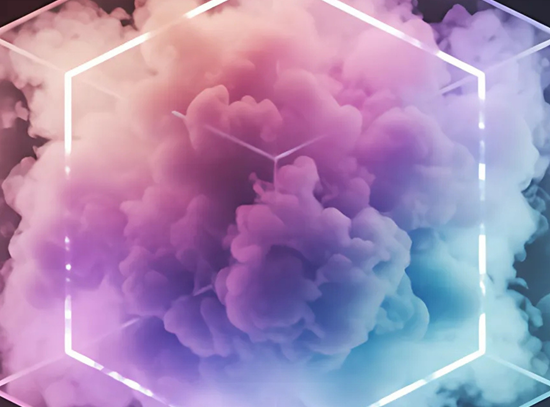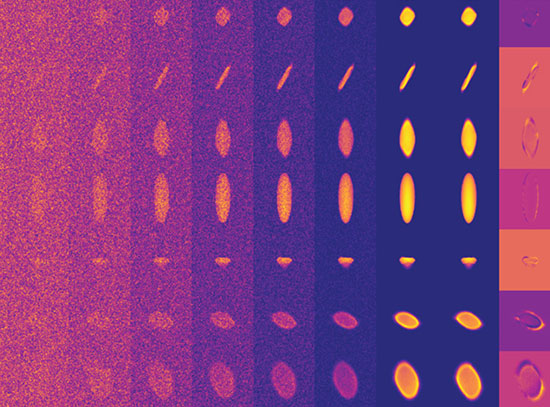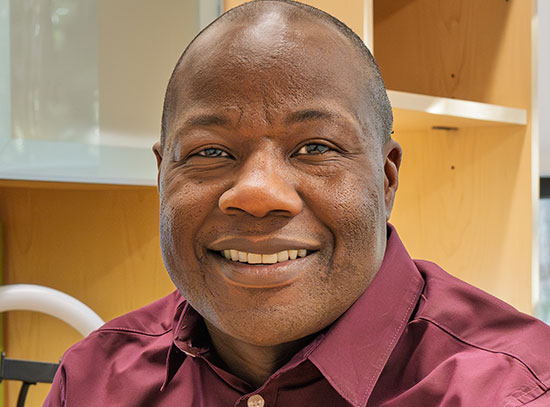DOE Renews Brookhaven Lab-led Quantum Research Center
The Co-design Center for Quantum Advantage will deliver advances in materials science and modular architectures to enable scalable, fault-tolerant quantum systems
November 4, 2025

(Joanna Pendzick/Brookhaven National Laboratory)
UPTON, N.Y. — The U.S. Department of Energy (DOE) has announced $125 million in funding over five years to advance cutting-edge quantum information science (QIS) research conducted through the Co-design Center for Quantum Advantage (C2QA). Led by DOE’s Brookhaven National Laboratory, C2QA is one of five National QIS Research Centers established in 2020 — and awarded new funding today — to accelerate scientific discovery and innovation that will enable quantum technologies with real-world applications in fields like chemistry, materials science, and nuclear physics. This continued investment, which supports the National Quantum Initiative Act, is critical to maintaining U.S. leadership in QIS.
“C2QA has set ambitious and exciting research goals for the next five years,” said Charles Black, C2QA director and deputy associate laboratory director at Brookhaven Lab. “We’re thrilled for the opportunity to continue driving the breakthrough science that will enable scalable quantum systems.”
The C2QA team — composed of 28 premier institutions spanning national labs, academia, applied research and development organizations, and industry — will tackle two major challenges to achieving scalable, fault-tolerant quantum computing: insufficient coherence times and scaling limits.
The building blocks of quantum systems are called quantum bits, or qubits. To perform useful computations — and enable practical quantum computing — qubits need to retain quantum information for sufficiently long amounts of time. During the last five years, C2QA researchers made significant strides in understanding this property, known as coherence, and the different factors that can limit coherence times. Materials science experts, for example, introduced tantalum-based qubits that exhibited longer coherence times than qubits made from other superconducting metals — and subsequently dedicated several years to characterizing and improving them. These qubits enabled C2QA researchers to demonstrate the first quantum error correction significantly beyond break-even. This work was led by Michel Devoret, who shared the 2025 Nobel Prize in Physics for earlier discoveries in quantum mechanics, which are foundational to today’s quantum systems. More recently, a team of C2QA researchers developed tantalum-based superconducting qubits with coherence times exceeding one millisecond — the longest ever reported for superconducting qubits.
“The first five years of C2QA have shown what’s possible when we bring together experts across disciplines and institutions to tackle some of the hardest challenges in quantum science,” said Andrew Houck, C2QA chief scientist and dean of Princeton University’s School of Engineering and Applied Science. Houck served as C2QA director from 2021 to 2025. “We’ve laid a solid foundation that is informing the next phase of discovery, and I look forward to carrying this momentum into the next chapter of C2QA.”
In line with the “co-design” element of the Center’s name, cross-platform co-design has driven many important C2QA accomplishments. A new type of superconducting qubit, for example, was informed by recent progress in neutral atom qubits. Known as the superconducting dual rail, this new architecture promises increased error resilience. Similarly, C2QA researchers adapted methods from diamond-based sensors research to better understand and boost superconducting qubit coherence. Center researchers plan to continue harnessing the benefits of a cross-platform approach by pursuing neutral atom and diamond material systems in addition to the superconducting systems that were the focus of the first five years. This expansion to three physical platforms will enable C2QA researchers to apply successes in coherence-driven materials design to the realization of practical quantum sensors alongside quantum computers.
State-of-the-art characterization facilities at the National Synchrotron Light Source II (NSLS-II) and the Center for Functional Nanomaterials (CFN) have been central to C2QA’s materials accomplishments — and will remain integral as the Center drives towards quantum advantage through coherence-driven materials design.
“DOE scientific user facilities are extraordinary resources, combining unique capabilities with the expertise of talented staff who understand the power of collaboration,” said Black, who previously served as CFN director. “In this next phase, C2QA plans even deeper engagement with NSLS-II and CFN.” NSLS-II and CFN are DOE Office of Science user facilities at Brookhaven Lab.
Beyond improving the performance of individual qubits, C2QA researchers have been puzzling over how to realistically integrate qubits into a computing system capable of solving real-world problems. While large-scale, fault-tolerant quantum computers will require hundreds of thousands — if not millions — of physical qubits, most quantum platforms can currently only accommodate a few thousand. To help overcome these physical constraints, C2QA researchers from 14 institutions developed a new framework for modular quantum system architectures. This means that instead of cramming millions of qubits into one massive system, the researchers would group qubits into multiple, smaller modules that can be unified into a single computing system.
During the next five years, C2QA researchers will develop the physical components needed for modular quantum computing — such as hardware for individual modules and structures to interconnect them — as well as quantum algorithms and error-correction strategies. By employing “vertical co-design” strategies across applications, architecture, devices, and materials, researchers will tailor each element based on current capabilities and future priorities, optimizing the overall system to tackle complex scientific challenges.
In addition to conducting groundbreaking research, C2QA has designed and executed workforce development programming to reach the Nation’s best and brightest minds at every educational and career stage. For example, C2QA summer schools introduce high school and undergraduate students to foundational QIS concepts at a level that coincides with the math and science they’ve already encountered in school. Recognizing the more immediate needs of the quantum workforce, the Center has also spearheaded QIS career fairs and self-study courses that provide practicing scientists and engineers with resources that could help them pivot into quantum careers. These efforts to build the quantum workforce pipeline will remain a hallmark of C2QA in the years ahead.
“C2QA has transformed how we think about quantum workforce development — not just by training students, postdocs, and faculty but by building cross-institutional pathways into quantum careers,” said C2QA Chief Operating Officer Kimberly McGuire, who also serves as the Center’s outreach, education, and workforce development leader. “From high school classrooms to national labs, C2QA has created a vibrant ecosystem where emerging talent can thrive, collaborate, and lead.”
James Misewich, associate laboratory director for the Energy and Photon Sciences Directorate at Brookhaven Lab, said, “Brookhaven’s stewardship of C2QA has already driven tremendous progress in quantum information science, and this renewal affirms both those achievements and the promise of what lies ahead. We’re proud to lead C2QA into its next phase of groundbreaking discoveries.”
C2QA’s partner institutions are California Institute of Technology; City College of New York; Columbia University; Cornell University; Harvard University; Howard University; IBM; DOE’s Thomas Jefferson National Accelerator Facility; Johns Hopkins University; Massachusetts Institute of Technology; NASA Ames Research Center; New York University; North Carolina Agricultural and Technical State University; Northwestern University; NY Creates; DOE’s Pacific Northwest National Laboratory; DOE’s Princeton Plasma Physics Laboratory; Princeton University; Rensselaer Polytechnic Institute; Stanford University; Stony Brook University; University of California, Santa Barbara; University of Illinois Chicago; University of Toronto; University of Washington; Virginia Polytechnic Institute and State University; and Yale University.
The other National QIS Research Centers funded by the DOE Office of Science are the Quantum Science Center, Quantum Systems Accelerator, Q-NEXT, and Superconducting Quantum Materials & Systems Center.
Brookhaven National Laboratory is supported by the Office of Science of the U.S. Department of Energy. The Office of Science is the single largest supporter of basic research in the physical sciences in the United States and is working to address some of the most pressing challenges of our time. For more information, visit science.energy.gov.
Follow @BrookhavenLab on social media. Find us on Instagram, LinkedIn, X, and Facebook.
2025-22687 | INT/EXT | Newsroom









